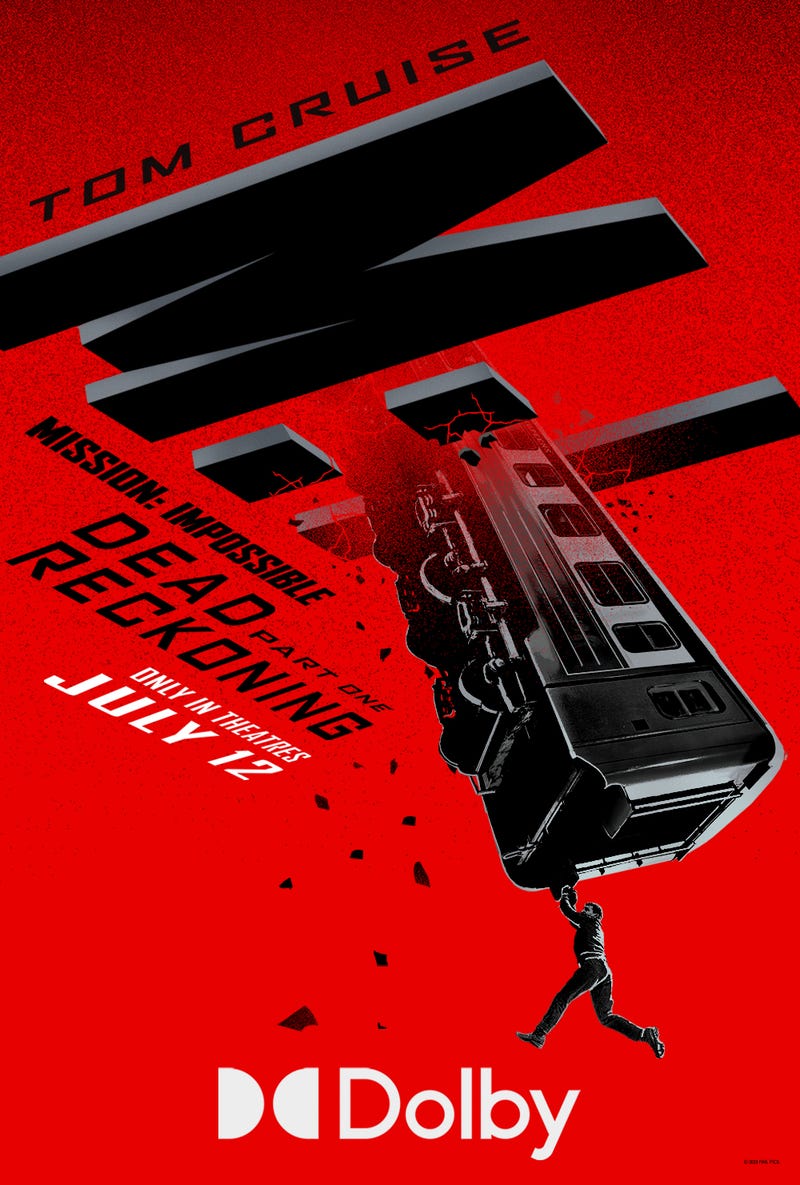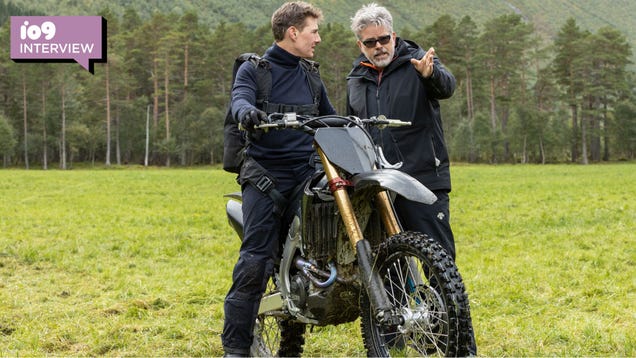Getting butts into movie theater seats is an assignment Tom Cruise has taken upon himself, one cinema-revitalizing blockbuster at a time. In partnership with director-writer Chris McQuarrie, the star is hitting the screens with the latest thrilling chapter of the Mission: Impossible franchise, Dead Reckoning Part One.
io9 caught up with McQuarrie to celebrate the film’s release and talk about the cinematic formats that make Ethan Hunt’s current globe-trotting adventure—which involves stopping an evil AI and its algorithmic threat from ending the world—very timely and exciting to see unfold on screen. The film, which is now in theaters in formats like Dolby Atmos and Dolby Vision, is a visual feast, with soundscapes that really level up the action and stakes in the first half of the two-part spy thriller.
Sabina Graves, io9 : Congrats on the film! Being in digital media, where writers are currently battling AI much like screenwriters and actors are, it was a fun and cathartic escape. I’m especially excited to talk to you about Dead Reckoning Part One because I’m a huge fan of seeing films in theaters in the best possible formats. One of the things that struck me was the sound—the cacophony of sounds really worked as a symphony to bring its action sequences to life. What’s your favorite part of layering the sounds in formats like Dolby Atmos, to get them work together and engulf audiences through auditory moments?
Chris McQuarrie: Sound and music are as much a storytelling element to me as cinematography, performance, and screenplay. They are also the last things I turn my attention to. It’s essential to me that the movie work without them. The result is a movie with its own internal rhythm—one that gives the entire film a musicality. By cutting without temp music, for example, we often find that a cue written for one scene hits the cuts and emotional beats of another scene perfectly. There are instances in all of my films, from Jack Reacher to Dead Reckoning, where a cue is repeated almost verbatim to create two completely different emotional effects. Of equal importance is the feeling of the sound and music. Rich, warm tones and bass-y percussion. Whenever possible we avoid high end crashes, breaking glass, shrill instrumentation etc.—all of which can be punishing. Watch my films in Dolby Atmos and you’ll feel the movie as much as see and hear it—always in a way that is designed to stimulate and satisfy. Sound and music are the secret sauce that tell you where to put your feelings.
io9: Visually, you have both face-to-face fisticuff moments between the characters in some of the tightest quarters, but also those big action set-pieces. How has your approach evolved in bringing these moments to life from your first Mission Impossible film to now? I love the spectacle of these films on formats like Dolby Vision. I’m curious if you have in mind how the action will present on screen on the page, or does that happen later?
McQuarrie: I tend not to try and predict how things will look. Experience has taught me this just cuts me off from discovering something unique. I really didn’t know how we’d shoot the alley fight until we started testing different camera techniques on set. There is also the commitment to sustaining shots as long as possible so as not to force cuts. As such, Tom [Cruise] and Pom [Klementieff] are all taking serious hits in that alley fight. Even then, the very same action shot the wrong way would not have nearly the energy it does. Unsung in that dynamic is camera operator Chunky Richmond. You’re looking at a tremendous amount of athletic effort and synchronized choreography—all discovered on set during rehearsals through a process of exhaustive experimentation.
Choreography and story will only take you so far. As with the bathroom fight in Fallout, the alley fight in Dead Reckoning Part One ultimately hinges on the physical commitment of the actors and the camera operator. It’s punishing work and not for the faint of heart.

io9: Tom Cruise seems like such a “down for anything” collaborator, and that cliff dive was breathtaking. How does your partnership influence these stories and continue to expand Ethan’s world? I know Cruise said he’s in this for a long haul, are you game to keep raising the bar with him?
McQuarrie: Tom and I are very serious about the shared big screen experience and it’s not an exaggeration to say the industry is facing an existential crisis. We’ll do whatever it takes to bring the widest possible audience back to cinemas—to rediscover an appreciation for the experience itself. That starts with immersion—putting the audience in the action and doing so practically. Faced with CGI-driven movies where characters can do virtually anything in multiverses where even death has no finality or meaning, our work is cut out for us. It’s not about whether I’m game. That’s the job. We’re all-in. Every time. And we won’t stop until we feel you’re getting your money’s worth. We owe you that. As for the action we have coming, the bar has already been raised. We have things in the can for Dead Reckoning Part Two that I can confidently say go far beyond what we’ve done in Part One. And we still have sequences we haven’t shot.
io9: We love talking about first fandoms at io9. What were your first genre loves (books, movies, games, shows) that influenced your career path? Are they any that might be particular touchstones for the Mission: Impossible franchise?
McQuarrie: There are many influences, though perhaps not ones you might expect. Romantic dramas and comedies have a greater influence on Dead Reckoning than some of the epics you might assume, and even then only fleetingly. I’d say I’m less influenced by specific movies than I am by an ethos. I hope you’ll pardon that pretentious word, I just can’t think of another one. It’s not style, necessarily. It’s a kind of storytelling—a sweeping, unabashed emotionality that filmmakers like Michael Curtiz, John Huston, John Ford, John Sturgess, even early Spielberg and Lucas embraced. Some people have lost the taste for it. They find it clunky or corny or absurd. So be it. I believe in my bones that it never fully went out of style. The harder we lean into it, the more my suspicions are confirmed.
In the end, Dead Reckoning Parts One and Two are less influenced by movies I’ve seen than they are by all the passion projects I could never get made. Part One was made under extreme duress. There were times I was quite certain it would be the end of my career if not me personally. I figured if I was going down, I would go down swinging. We’ve emerged from a very long, difficult process to an extraordinarily kind reception. I’m not only relieved, I am eternally grateful.

Watch Mission: Impossible – Dead Reckoning Part One in theaters now, where it’s available in formats like Dolby Vision and Dolby Atmos.
Want more io9 news? Check out when to expect the latest Marvel, Star Wars, and Star Trek releases, what’s next for the DC Universe on film and TV, and everything you need to know about the future of Doctor Who.
